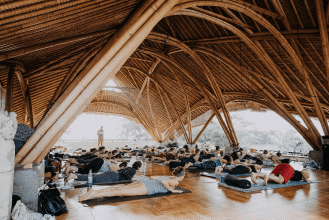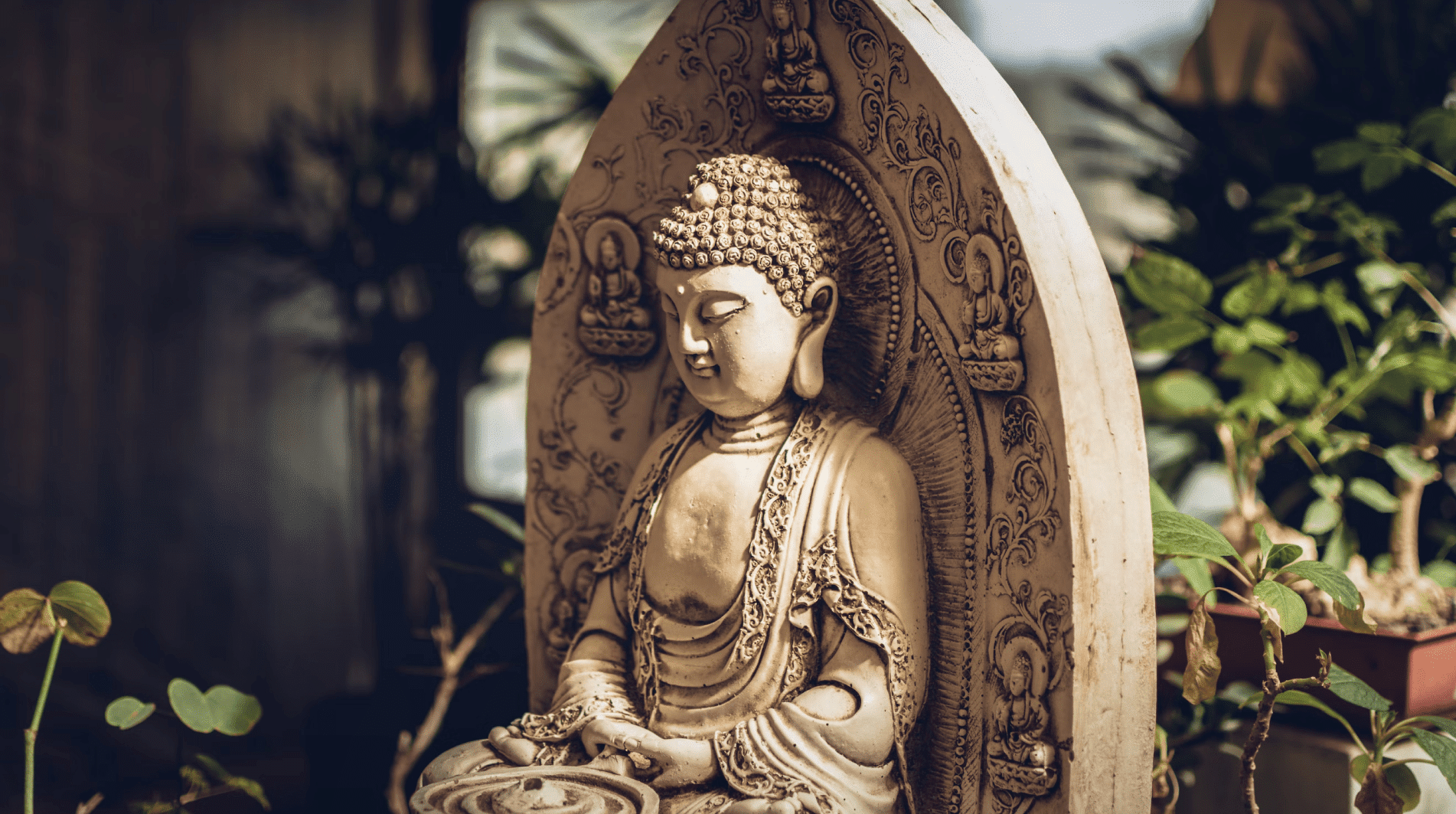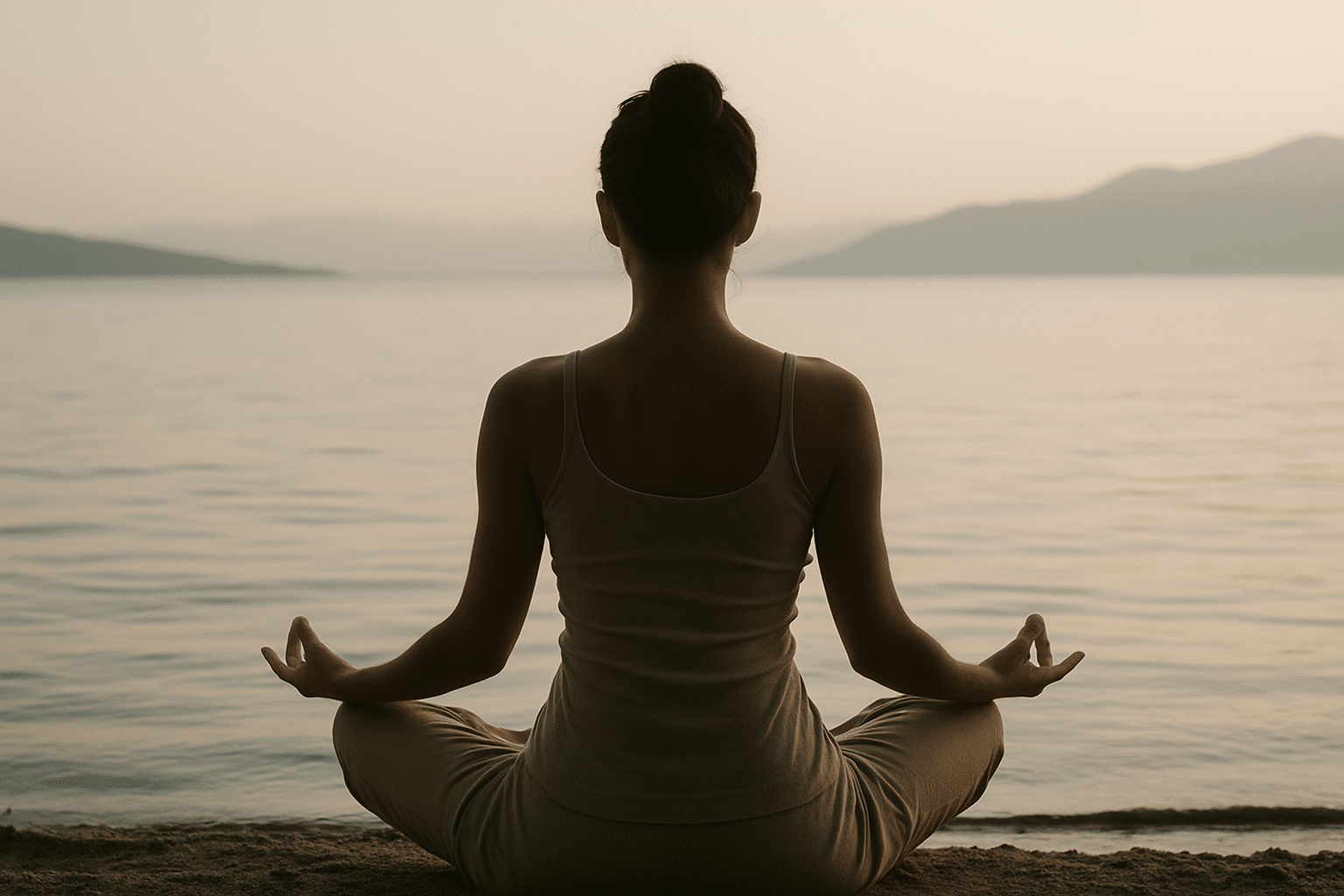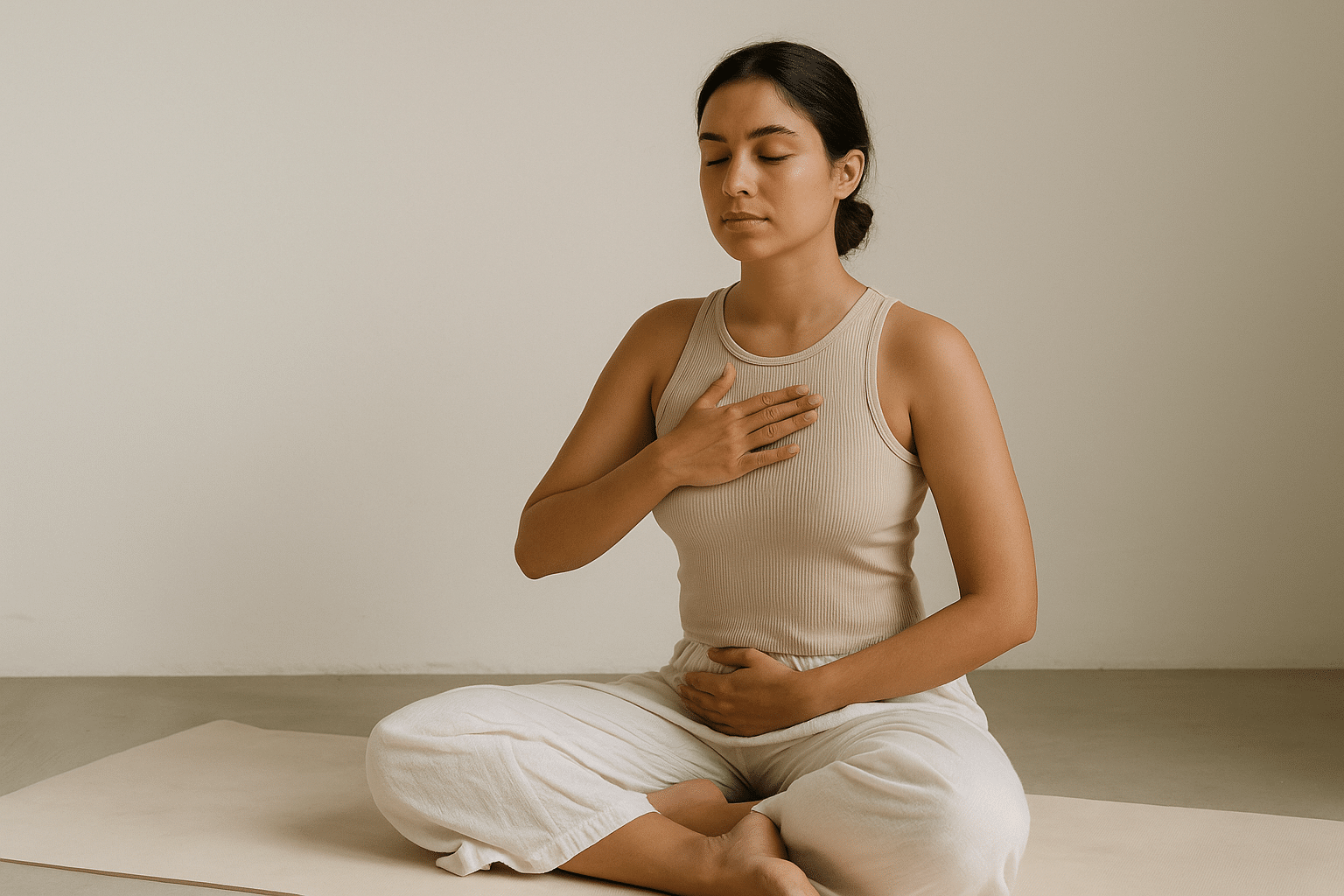
Yoga is everywhere these days, filling up studios and Instagram feeds while promising everything from stronger bodies to calmer minds. People are often surprised to learn that yoga dates back about 5,000 years and was never just about stretching or fancy poses. Most miss that it’s actually a holistic path designed for mental resilience, spiritual growth, and deep self-discovery, offering far more than meets the eye.
Table of Contents
- Understanding The True Meaning Of Yoga
- History And Philosophies Shaping Yoga
- Popular Yoga Styles And Practices Explained
- Physical, Mental, And Spiritual Benefits Of Yoga
Quick Summary
| Takeaway | Explanation |
|---|---|
| Yoga is a holistic practice | Yoga integrates physical, mental, and spiritual aspects for overall well-being and self-discovery. |
| Explore various yoga styles | Different styles cater to diverse needs; find one that fits your goals, from fitness to relaxation. |
| Yoga enhances emotional resilience | Regular practice helps manage stress, anxiety, and boosts emotional intelligence and self-awareness. |
| Continuous self-discovery is key | Engage in yoga as a journey of ongoing personal growth rather than a fixed destination. |
| Yoga promotes a sense of interconnectedness | Through its practices, yoga fosters understanding of our connection to ourselves and the universe around us. |
Understanding the True Meaning of Yoga
Yoga represents far more than a series of physical postures or fitness routines. At its core, yoga is a profound philosophical system designed to harmonize the body, mind, and spirit. Exploring the deeper philosophy of yoga reveals an intricate practice with roots stretching back thousands of years in ancient Indian traditions.
Beyond Physical Exercise
Contrary to popular Western interpretations, yoga is not merely about flexibility or achieving impressive physical positions. According to research from the International Journal of Yoga, the Sanskrit root ‘yuj’ literally means to join or unite. This linguistic origin provides critical insight into yoga’s fundamental purpose: creating a comprehensive connection between individual consciousness and universal awareness.
The National Center for Complementary and Integrative Health describes yoga as an ancient philosophy encompassing multiple dimensions of human experience. These dimensions include ethical principles, breath control, physical postures, meditation, and spiritual development. Each component plays a crucial role in supporting practitioners’ holistic transformation.
A Holistic System of Personal Development
Yoga functions as a sophisticated system of personal growth that transcends physical boundaries. Its practices aim to cultivate self awareness, emotional balance, and spiritual insight. Through disciplined practice, individuals learn to quiet mental fluctuations, develop greater compassion, and understand their interconnectedness with the broader universe.
Practitioners engage with yoga not as a destination but as a continuous journey of self discovery. The practice encourages practitioners to observe their internal landscape without judgment, developing awareness that extends far beyond the yoga mat. By integrating physical movement, breathwork, and meditative techniques, yoga offers a comprehensive approach to understanding oneself and navigating life’s complex challenges.
The transformative potential of yoga lies in its ability to synchronize physical, mental, and spiritual energies. It provides tools for managing stress, enhancing mental clarity, and developing a more profound sense of inner peace. Whether approached as a physical practice, philosophical system, or spiritual path, yoga remains a powerful methodology for personal growth and self understanding.
History and Philosophies Shaping Yoga
Yoga’s philosophical foundations trace back thousands of years, representing a complex and nuanced system of spiritual and physical practices that have profoundly transformed human understanding of wellness and consciousness. Learn more about yoga’s philosophical roots to appreciate its deep cultural significance.
Ancient Origins and Spiritual Foundations
According to archaeological research from the Indus Valley Civilization, yoga’s history spans approximately 5,000 years, with evidence suggesting its practice predates many contemporary spiritual traditions. The earliest systematic exploration of yoga emerged in the Vedic period, where ancient Indian sages developed sophisticated philosophical frameworks exploring human consciousness and spiritual evolution.
The Britannica Encyclopedia of Philosophy highlights that yoga represents one of six classical philosophical systems in Indian thought. Its foundational text, the Yoga Sutras by Patanjali, composed around the 2nd century BCE, provided a comprehensive framework for understanding yoga as more than physical exercise. Patanjali outlined an intricate eight-limbed path (Ashtanga) that encompasses ethical guidelines, physical postures, breath control, sensory withdrawal, concentration, meditation, and ultimate spiritual liberation.
Philosophical Evolution Through Centuries
Yoga’s philosophical journey reflects remarkable adaptability and depth. From its early Vedic roots to its contemporary global practice, yoga has continuously evolved while maintaining its core transformative principles. The Upanishadic period significantly contributed to yoga’s philosophical sophistication, introducing concepts of inner exploration, self-realization, and the interconnectedness of individual consciousness with universal awareness.
Different philosophical schools interpreted yoga through unique lenses. Tantric traditions emphasized energy cultivation and spiritual awakening, while Hatha yoga focused on physical practices as a pathway to spiritual insight. These diverse perspectives demonstrate yoga’s remarkable capacity to address human experience across multiple dimensions physical, mental, emotional, and spiritual.
Modern yoga philosophy integrates ancient wisdom with contemporary scientific understanding. Practitioners now view yoga not just as a spiritual practice but as a holistic system for personal development. This evolution reflects yoga’s fundamental adaptability a practice that remains deeply rooted in tradition while remaining responsive to changing human needs and scientific insights. Whether approached as a physical discipline, meditative practice, or comprehensive life philosophy, yoga continues to offer profound tools for personal transformation and self understanding.
Popular Yoga Styles and Practices Explained
Yoga encompasses a diverse range of practices, each offering unique approaches to physical, mental, and spiritual well-being. Explore the nuances of yoga styles to discover the practice that resonates most with your personal journey and wellness goals.
Classical Yoga Styles
According to research from the National Institutes of Health, several prominent yoga styles have emerged, each with distinct characteristics and benefits. Hatha Yoga serves as the foundational practice, focusing on basic poses and breath control, making it ideal for beginners seeking to understand fundamental yoga principles. Ashtanga Yoga presents a more structured and physically demanding approach, featuring a precise sequence of postures that challenge practitioners’ strength and endurance.
Iyengar Yoga stands out for its meticulous attention to alignment and precise body positioning. Practitioners use props like blocks, straps, and bolsters to achieve perfect form and accommodate various physical abilities. This style proves particularly beneficial for individuals recovering from injuries or those seeking therapeutic movement practices.
Dynamic and Specialized Practices
Harvard Medical School’s health experts highlight the diversity of modern yoga practices. Vinyasa Yoga emerges as a popular dynamic style that synchronizes breath with movement, creating a fluid and meditative experience. This practice appeals to those seeking both physical workout and mindful movement. Bikram Yoga, alternatively known as hot yoga, takes place in a heated room with a consistent sequence of 26 postures, designed to promote intense sweating and deep muscle engagement.
Kundalini Yoga offers a more spiritual approach, emphasizing breath work, meditation, and energy movement. This practice focuses on awakening internal energy and promoting spiritual transformation. Restorative Yoga provides a gentler alternative, using supported poses and extended holds to promote deep relaxation and stress relief.
Contemporary Yoga Adaptations
The National Center for Complementary and Integrative Health notes the continuous evolution of yoga practices. Modern adaptations include power yoga, which intensifies traditional practices for fitness enthusiasts, and yin yoga, which involves holding passive poses for extended periods to target deep connective tissues. Specialized forms like prenatal yoga cater to specific populations, demonstrating yoga’s remarkable adaptability.
Today’s yoga landscape reflects a holistic approach to wellness. Practitioners can choose styles that align with their physical capabilities, spiritual interests, and personal goals. Whether seeking intense physical challenge, meditative practices, or therapeutic movement, there exists a yoga style to support individual wellness journeys. The diversity of these practices underscores yoga’s universal appeal and capacity to meet varied human needs across different life stages and physical conditions.
Below is a summary table comparing popular yoga styles discussed in the article, highlighting their key features and primary focus:
| Yoga Style | Key Features | Best For |
|---|---|---|
| Hatha | Basic poses, breath control | Beginners, foundational practice |
| Ashtanga | Structured sequence, physically demanding | Strength, endurance |
| Iyengar | Alignment focus, use of props | Injury recovery, therapeutic movement |
| Vinyasa | Breath-synced, fluid movement | Dynamic workout, mindful flow |
| Bikram | Fixed 26-posture sequence, heated room | Intense sweating, muscle engagement |
| Kundalini | Breath work, meditation, energy awakening | Spiritual growth, inner transformation |
| Restorative | Supported poses, deep relaxation | Stress relief, relaxation |

Physical, Mental, and Spiritual Benefits of Yoga
Yoga transcends mere physical exercise, offering a comprehensive approach to wellness that integrates body, mind, and spirit. Discover the transformative power of holistic yoga practices and unlock your potential for profound personal growth.
Physical Health and Wellness
Research from Very Well Mind reveals yoga’s remarkable impact on physical health. Regular practice enhances flexibility, builds muscular strength, and improves overall body awareness. Unlike traditional fitness routines, yoga develops strength through bodyweight movements that engage multiple muscle groups simultaneously, promoting balanced muscle development and reducing injury risk.
Cardiovascular health also receives significant benefits. Studies demonstrate that consistent yoga practice can lower blood pressure, improve respiratory function, and enhance circulation. The combination of controlled breathing and physical postures creates a unique physiological response that supports heart health and boosts immune system functionality.
Mental and Emotional Resilience
According to research exploring the connection between spirituality and mental health, yoga provides powerful tools for emotional regulation and psychological well-being. The meditative aspects of yoga activate the parasympathetic nervous system, effectively reducing stress hormones and promoting a state of calm.
The Journal of Health Psychology highlights that practitioners often begin yoga for stress relief but continue for deeper psychological benefits. Mindfulness techniques integrated into yoga practice help individuals develop emotional intelligence, improve self-awareness, and cultivate more effective coping mechanisms. Regular practitioners report reduced symptoms of anxiety, depression, and enhanced overall mental clarity.
Spiritual Transformation and Personal Growth
Beyond physical and mental benefits, yoga offers a profound pathway to spiritual exploration. The practice encourages practitioners to develop a deeper understanding of themselves and their connection to the broader universe. Through intentional breath work, meditation, and mindful movement, individuals can experience a sense of inner peace and expanded consciousness.
Yoga’s spiritual dimension goes beyond religious boundaries, providing a universal approach to personal transformation. By cultivating mindfulness and self-reflection, practitioners learn to observe their thoughts and emotions without judgment. This practice develops greater compassion, not only for oneself but for others, fostering a more empathetic and interconnected worldview.
The holistic nature of yoga means that benefits are cumulative and interconnected. Physical practice supports mental health, mental clarity enhances spiritual awareness, and spiritual growth influences physical well-being. Whether approached as a fitness routine, stress management technique, or spiritual practice, yoga offers a comprehensive system for human development that adapts to individual needs and aspirations.
Here’s a summary table outlining the main benefits of yoga across physical, mental, and spiritual dimensions as described above:
| Dimension | Key Benefits |
|---|---|
| Physical | Improves flexibility, builds strength, enhances cardiovascular health, boosts immunity |
| Mental | Reduces stress and anxiety, improves mental clarity, promotes emotional resilience |
| Spiritual | Deepens self-awareness, fosters inner peace, supports personal growth and compassion |

Frequently Asked Questions
What are the main components of yoga?
Yoga integrates physical postures, breath control, meditation, and ethical principles to foster holistic development in physical, mental, and spiritual dimensions.
How many different styles of yoga are there?
There are several styles of yoga, including Hatha, Ashtanga, Iyengar, Vinyasa, Bikram, Kundalini, and Restorative, each offering unique approaches to practice and wellness.
What are the benefits of practicing yoga regularly?
Regular yoga practice can improve flexibility, build strength, enhance mental clarity, reduce stress and anxiety, and promote spiritual growth and emotional resilience.
Is yoga suitable for beginners?
Yes, many yoga styles, particularly Hatha and Iyengar, are beginner-friendly and provide a solid foundation for those new to yoga, focusing on basic postures and breath control.
Ready to Deepen Your Yoga Journey?
You have just discovered how yoga is much more than a sequence of poses. Learning about the holistic system that unites the body, mind, and spirit often leaves many modern practitioners searching for authentic education and personal transformation. Are you feeling the urge to go beyond the surface, to build a solid foundation in yoga philosophy, physical practice, meditation, and teaching skills? This article outlined the path toward integrating yoga into every part of your life. Now you can start making that journey real with expert support.

Explore certified teacher training and immersive wellness education at Yoga East West, where you not only study asanas and anatomy but also gain a deep understanding of core yogic philosophy, mindfulness, and modern techniques. Whether you are a beginner seeking foundational guidance or a practitioner longing for advanced mentorship, our yoga alliance-accredited programs are designed to meet you where you are. Don’t just read about yoga’s potential, experience it for yourself. Visit Yoga East West and learn more about our transformational teacher training courses in Bali, Costa Rica, or Thailand. Now is the time to step onto the path of self-mastery and make your commitment to authentic yoga education.
















